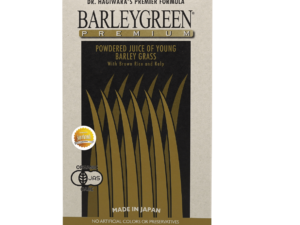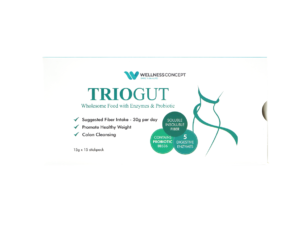Over 40% of Malaysians report digestive discomfort annually, with many unaware that strategic dietary changes could alleviate their symptoms. Medical professionals increasingly recognize tailored nutrition plans as critical tools for managing acute gastrointestinal issues.
Certain health challenges demand temporary adjustments to eating habits. For instance, individuals recovering from bowel surgeries or managing flare-ups of chronic inflammation often benefit from modified meal plans. These protocols allow the digestive system to rest while maintaining essential nutrient intake.
Healthcare teams carefully balance patient needs when recommending dietary shifts. Registered dietitians emphasize that these plans are short-term solutions, not lifelong restrictions. Proper implementation requires monitoring to prevent nutritional gaps and support healing.
Key Takeaways
- Specific medical situations necessitate temporary fiber reduction for digestive recovery
- Inflammatory bowel flare-ups often require immediate dietary adjustments
- Post-surgical healing benefits from controlled nutritional intake
- Professional guidance ensures safe implementation of modified diets
- Recognizing warning signs helps prevent complications through timely intervention
This guide combines clinical expertise with practical advice, offering clear strategies for those navigating temporary dietary modifications. Understanding the science behind these recommendations empowers patients to make informed decisions about their gut health.
Introduction to Low-Fiber Diets

Click to 了解更多
Navigating dietary choices becomes crucial when digestive systems need healing. Temporary adjustments help the body recover while maintaining essential nourishment. These specialized eating patterns focus on easing gastrointestinal strain through strategic food selection.
Definition and Purpose
Plant-based foods naturally contain roughage that stimulates bowel activity. During specific health challenges, reducing this material allows sensitive tissues to rest. Medical teams often suggest limiting daily intake to 10-15 grams instead of typical 25-35 grams.
| Standard Diet | Modified Plan | Key Difference |
|---|---|---|
| 25-35g fiber/day | 10-15g fiber/day | Reduced bulk |
| Raw vegetables | Cooked vegetables | Softer texture |
| Whole grains | Refined grains | Lower residue |
Overview of Digestive Health Benefits
This approach decreases intestinal muscle activity by up to 40% during recovery phases. Patients often experience fewer cramps and less discomfort within 72 hours of starting the plan. The temporary change also minimizes gas formation and stool volume.
Healthcare providers emphasize that these diets work best when combined with targeted enzyme support. Most people transition back to regular eating patterns within 2-6 weeks, depending on their healing progress.
What conditions require a low-fiber diet?
Specific health situations demand carefully structured eating patterns to support recovery. Temporary dietary adjustments become vital when managing acute gastrointestinal distress or healing post-procedure tissues.

Medical Conditions and Recommendations
For those with Crohn disease, fiber reduction helps prevent undigested food from irritating narrowed intestinal areas during flare-ups. Similarly, ulcerative colitis patients often see improved symptoms like reduced bleeding when limiting roughage during active inflammation phases.
Diverticulitis episodes require immediate dietary changes. Inflamed intestinal pouches heal faster without fiber-induced irritation. Post-surgical recovery after procedures like colectomies also benefits from temporary fiber limits to prevent strain on healing tissues.
Chronic cases involving bowel strictures or obstructions sometimes need long-term modifications. As one gastroenterologist notes: “Every patient’s tolerance differs – we tailor plans based on imaging results and symptom progression.”
When Guidance from a Dietitian is Needed
Registered dietitian input becomes crucial when creating sustainable meal plans that meet nutritional needs. They help balance protein intake, vitamin levels, and calorie requirements while maintaining therapeutic fiber limits.
Complex cases involving multiple inflammatory bowel complications often require specialized expertise. Regular monitoring ensures patients avoid deficiencies while their bowel function stabilizes. Most transition back to regular diets within 4-8 weeks under professional supervision.
Benefits and Challenges of Following a Low-Fiber Diet
Adopting a low-fiber eating plan offers both relief and complexities for those managing gut health issues. While designed to reduce strain on the digestive system, these temporary protocols require careful balancing to maintain overall wellness.
Digestive Relief and Short-Term Benefits
Patients often notice rapid improvements in uncomfortable symptoms. Reduced intestinal workload leads to:
- 50% less abdominal cramping within 72 hours
- Smaller, more manageable bowel movements
- Decreased urgency and gas production
A gastroenterologist explains: “This approach acts as a reset button for overworked digestive systems.” The diet’s temporary nature helps inflamed tissues heal while preventing complications during acute flare-ups.
| Benefits | Challenges | Management Tips |
|---|---|---|
| Faster symptom relief | Limited food choices | Use meal plans |
| Reduced bowel strain | Nutritional gaps | Add supplements |
| Improved comfort | Bland flavors | Experiment with herbs |
Nutritional Considerations to Keep in Mind
While calorie and protein needs can be met, vitamin deficiencies become a concern. Many patients require multivitamins to compensate for missing nutrients from restricted fruits and vegetables.

Click to 了解更多
Healthcare teams emphasize:
- Regular blood tests to monitor levels
- Strategic use of approved nutrient-dense foods
- Temporary supplementation protocols
Those unsure about their nutritional status should consult professionals to identify fiber deficiencies. Most people maintain adequate health markers when following guided plans for less than eight weeks.
Low-Fiber Diet Foods: What to Include
Building meals with low-fiber ingredients doesn’t mean sacrificing flavor or nutrition. Many familiar foods can be adapted to support digestive healing while keeping meals satisfying. The key lies in selecting items that provide essential nutrients without irritating sensitive systems.

Dairy, Refined Grains, and Soft Fruits
Dairy products like yogurt and cottage cheese offer calcium and protein with minimal digestive effort. Refined grains such as white bread, pasta, and rice provide energy-boosting carbohydrates without harsh bran or husks.
Consider these gut-friendly options:
- Ripe bananas or mangoes (peeled)
- Canned peaches in juice
- Steamed carrots with a pat of butter
- Scrambled eggs with melted cheese
Cooking Methods: Steaming and Canning Techniques
Proper preparation transforms foods into easily digestible staples. Gentle cooking breaks down plant cell walls, making nutrients more accessible while reducing irritation risks.
| Method | Benefit | Example |
|---|---|---|
| Steaming | Preserves vitamins | Soft zucchini sticks |
| Canning | Removes tough skins | Peach slices in syrup |
| Blending | Eases digestion | Butternut squash soup |
Malaysian favorites like tauhu sumbat (stuffed tofu) adapt well to these methods. Remove seeds from steamed melons or blend papaya into smoothies for tropical flavor without fiber overload.
Foods and Ingredients to Avoid
Knowing which items to eliminate can significantly impact gut healing timelines. While some foods nourish, others may hinder recovery by irritating delicate digestive tissues. Careful selection helps maintain comfort while adhering to therapeutic guidelines.
High-Fiber Items: Whole Grains, Raw Vegetables, and Seeds
Whole grain products like wheat bread and barley contain abrasive fibers that scrape inflamed intestinal walls. Raw vegetables with tough skins – think unpeeled cucumbers or celery – act like “tiny scrub brushes” in sensitive systems, as one dietitian describes. Even small seeds in strawberries or tomatoes can lodge in narrowed bowel passages.
Nuts and legumes pose dual threats. Their gritty texture and gas-producing properties often worsen bloating. A 2023 study found patients avoiding beans and lentils reported 60% fewer abdominal cramps within days.
| Problematic Foods | Safer Alternatives |
|---|---|
| Brown rice | White rice |
| Crunchy peanut butter | Creamy peanut butter |
| Popcorn | Saltine crackers |
Tips for Dining Out and Reading Labels
Malaysian hawker stalls often use hidden ingredients. Request nasi putih tanpa sayuran (white rice without vegetables) and avoid mixed dishes like rojak. Check sauces for sesame seeds or chili flakes that might irritate healing tissues.
When shopping, scan for these red flags:
- “Whole wheat” or “multigrain” on cereal boxes
- More than 2g fiber per serving
- Phrases like “added bran” or “seed blend”
Packaged products sometimes use vegetable powders for color – always verify ingredients. As nutritionist Dr. Aminah Yusof advises: “When in doubt, choose single-ingredient foods you can recognize.”
Implementing a Low-Fiber Diet: A How-To Guide
Mastering a temporary eating plan requires smart strategies that support healing without causing stress. With proper organization, patients can maintain nutritional balance while sticking to their daily fiber targets.
Meal Planning and Preparation Strategies
Successful implementation starts with weekly menu planning. Preparing meals in advance reduces decision fatigue – try batch-cooking soft proteins like steamed fish or congee. Portion snacks into containers to maintain the 10-15g daily limit effortlessly.
Many find six small meals easier than three large ones. A sample day might include:
- Breakfast: Scrambled eggs with white toast
- Mid-morning: Banana smoothie
- Lunch: Chicken noodle soup
Local favorites like tau fu fa (soft tofu pudding) make satisfying desserts. Always keep emergency snacks handy for busy days.
Transitioning Back to Regular Fiber Intake
When reintroducing fiber, add one new food every 3-4 days. Start with peeled apples before trying leafy greens. Track how your body reacts – mild gas is normal, but pain means slowing down.
Dietitians often recommend:
- Increasing water intake with dietary changes
- Using psyllium husk supplements if needed
- Scheduling follow-up blood tests
Most people safely return to regular eating within two months. Remember, this phase celebrates healing progress while rebuilding digestive resilience.
FAQ
Who should consider a low-fiber diet?
People with inflammatory bowel disease (like Crohn’s or ulcerative colitis), diverticulitis flare-ups, or recovering from bowel surgery often benefit. It helps reduce irritation and allows the digestive system to heal.
Can someone eat fruits on a low-fiber meal plan?
Yes, but choices matter. Soft, peeled fruits like bananas, applesauce, or canned peaches work best. Avoid skins, seeds, and raw varieties like berries or apples with skin.
Are dairy products safe for a low-fiber regimen?
Most dairy items like milk, yogurt, and cheese are allowed unless someone has lactose intolerance. Opt for low-fat options if managing calorie intake.
How does a low-fiber diet help during a Crohn’s flare?
It minimizes undigested food passing through inflamed intestines, easing cramps and diarrhea. Refined grains like white rice or pasta are gentler than whole grains.
What cooking methods suit low-fiber foods?
Steaming, boiling, or canning softens vegetables and fruits. For example, peeled carrots become easier to digest when cooked thoroughly.
Is white bread better than whole wheat on this diet?
Yes. White bread, crackers, or cereals made from refined flour have less fiber. Always check labels for hidden whole grains or seeds.
When should someone consult a dietitian?
If following the diet long-term, experiencing nutrient deficiencies, or needing help balancing meals. A professional ensures adequate protein, vitamins, and minerals.
Can nuts or beans ever be included?
Typically no—they’re high in fiber and may irritate the gut. Exceptions depend on individual tolerance and a healthcare provider’s advice.
Are there risks to staying on this diet too long?
Prolonged use might lead to constipation or nutrient gaps. Gradually reintroducing fiber-rich foods under guidance supports long-term gut health.
How do you handle dining out on a low-fiber plan?
Choose simple dishes like grilled chicken, mashed potatoes, or steamed fish. Avoid salads, whole-grain breads, or vegetable-heavy meals unless approved.






